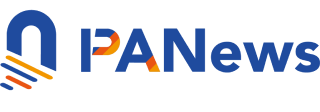By PANews
“The blockchain race is defined by different criteria in different phases, and these criteria are constantly changing. For example, EOS set TPS as the criterion, which was later replaced by dApp activity by TRON”, Jun LI, Founder of Ontology (or ONT for short), told PANews. He thinks the criterion in the next phase is going to be “real business applications”. That is why Ontology changed its slogan to “Ready for all Businesses” this year.
Unlike dApps on community-driven public blockchains, the Ontology ecosystem is aimed at both businesses and communities, and we try our best to provide as much technical and financial support for developers as possible. In contrast to some public blockchains who try to increase their DAUs through “gambling dApps”, which Ontology does not support. Such dApps are even barred from our dApp incentive schemes.
Speaking on the recent launch of TRC20 USDT, a stablecoin by TRON, Jun LI revealed that Ontology is thinking about issuing a USD stablecoin on its public blockchain as well, but it will not work with USDT, which is unregulated in the US.
How does Ontology build its ecosystem? What support and governance mechanisms does it have? How does it choose business partners? Is “cash-burning subsidies” a good way to develop the ecosystem? What is the core competitiveness of public blockchains? Jun LI shares with PANews his insight into these questions.
PANews: What’s the overall development plan for the Ontology ecosystem?
Jun LI: We takes a two-pronged approach to developing our ecosystem. Our top priority is to serve real businesses, including financial institutions and enterprises. But that will only make up a small portion, since partnership with enterprises would normally last months or even a year. We are discussing potential partnership with a number of large enterprises and have had some notable progress.
Another priority is our community. We have launched a systematic and open-to-all incentive program for nodes and dApps in the Ontology community. So far, all the dApps used incentives to attract users, but we have set a high bar for dApps listed on our platform to ensure their quality. The node incentive scheme has been well-received. For instance, just the other day, the largest EOS community joined Ontology as a new node. So currently we have a complete node ecosystem, with nodes both from major enterprises and large communities.












